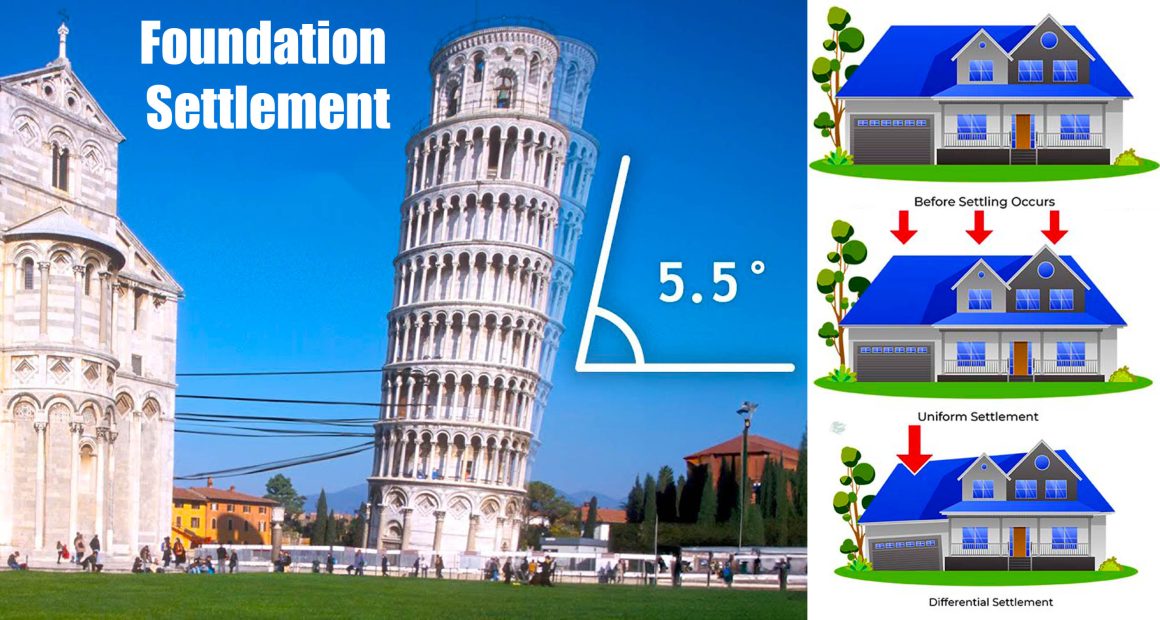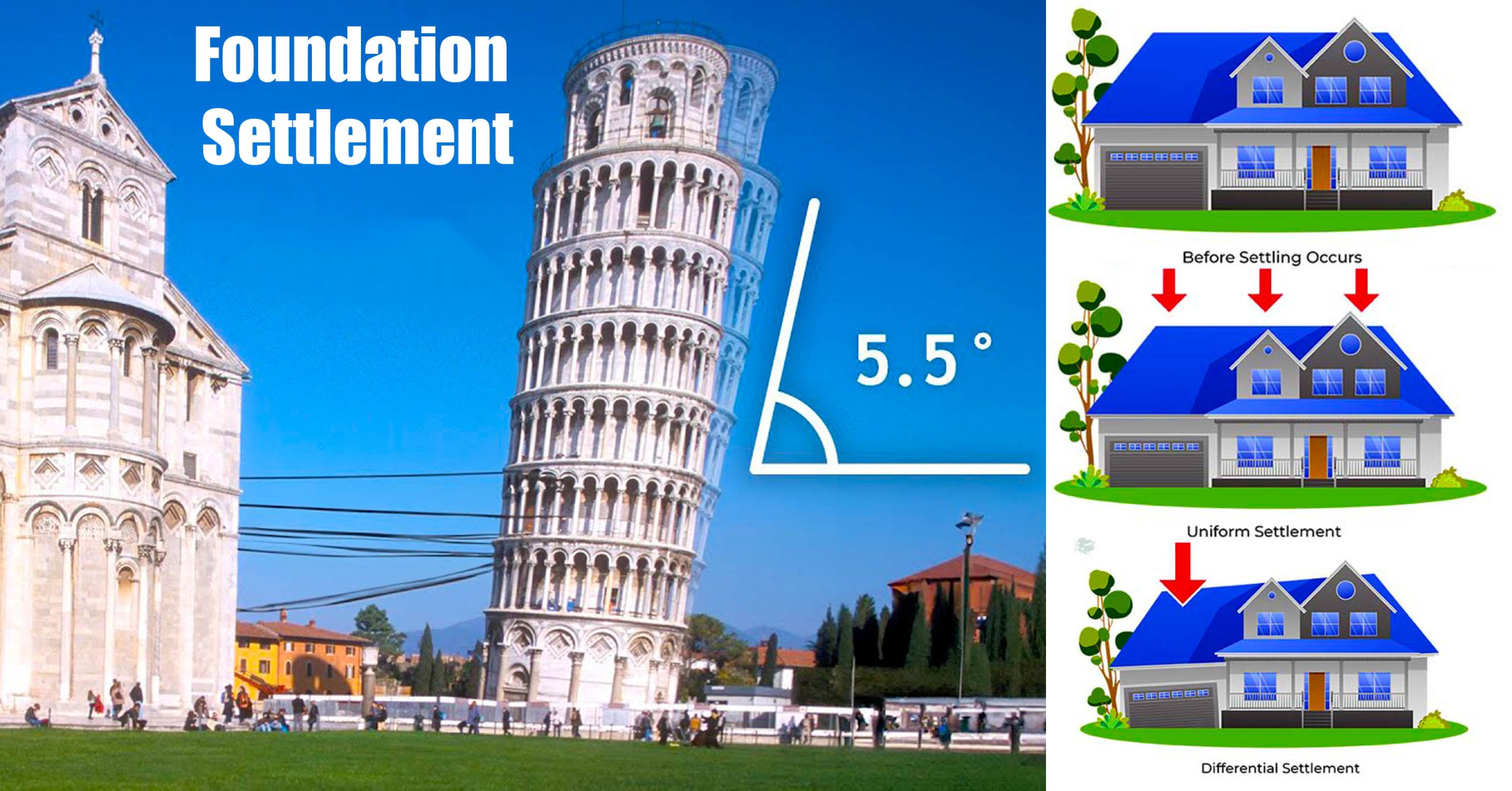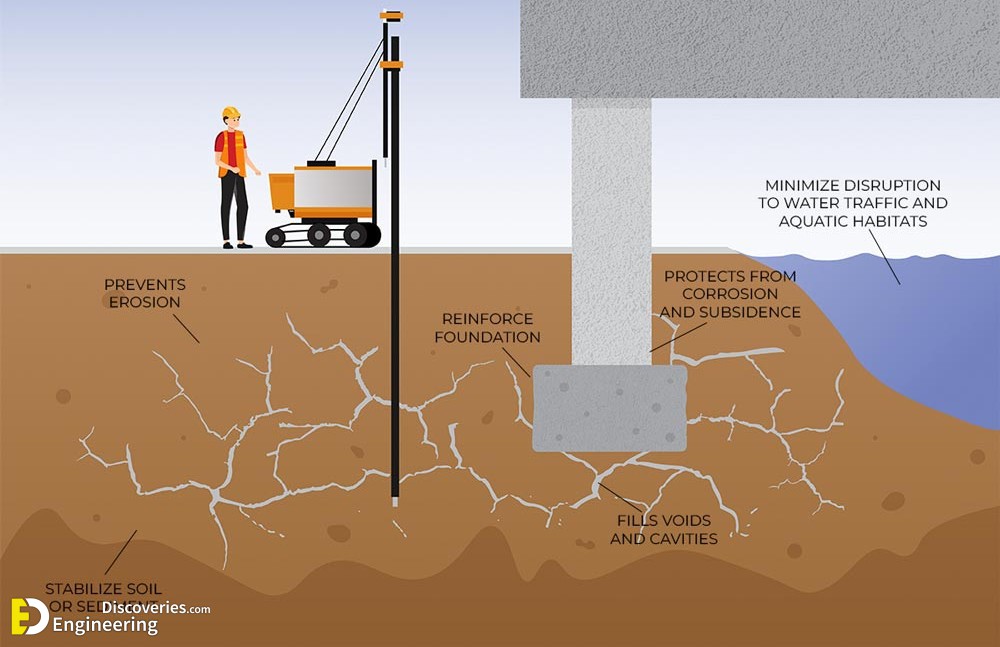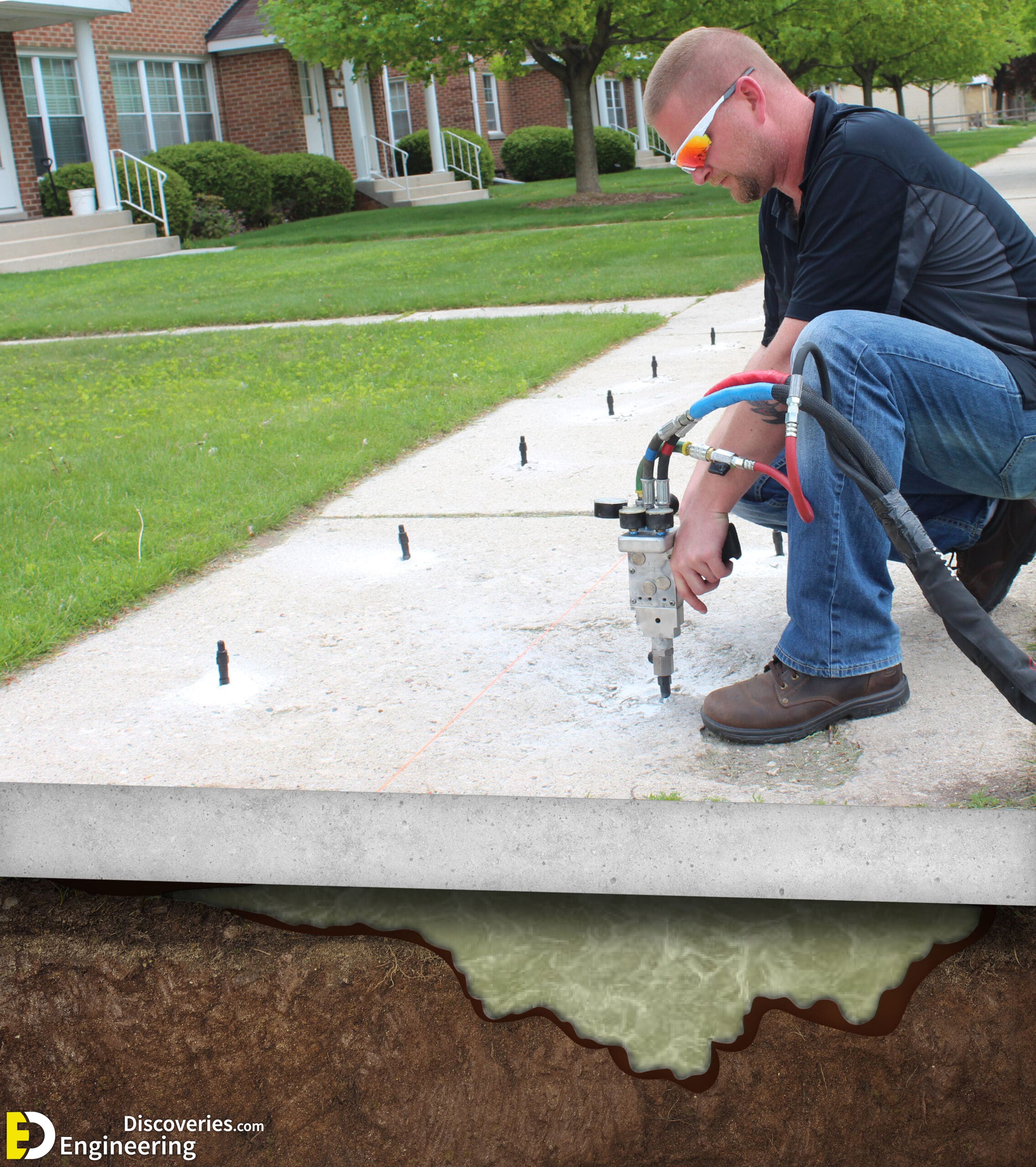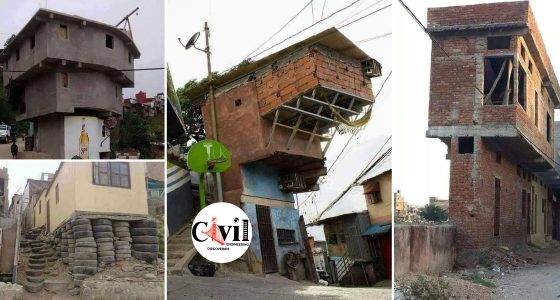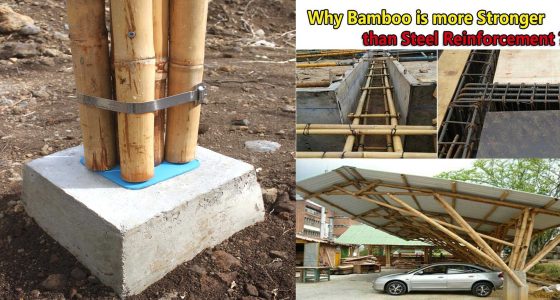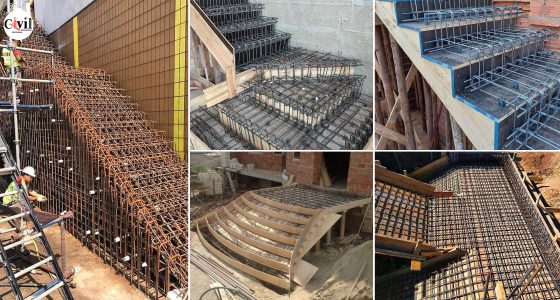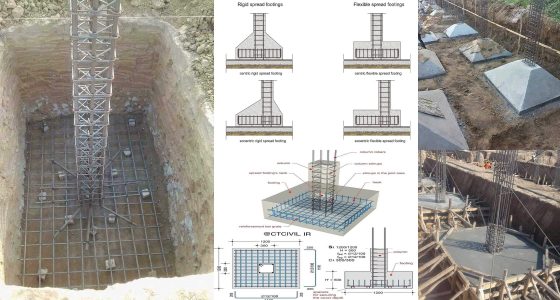Foundation Settlement-Types, Causes & Correction Methods-Ultimate Guide With 7 Expert Solutions
Foundation settlement is a widespread issue that affects both residential and commercial structures. When the soil beneath a foundation moves, the entire building can be compromised. Whether you’re an engineer, homeowner, or construction professional, understanding foundation settlement is crucial for maintaining safety and structural integrity.
What is Foundation Settlement?
Foundation settlement refers to the downward movement of a building’s base due to changes in the underlying soil structure. This movement may be minor and harmless, or it could lead to serious structural damage if not addressed.
Foundation settlement usually occurs over time and can affect new or old buildings. While some level of settlement is natural, excessive movement poses risks to safety and aesthetics.
Signs and Symptoms of Foundation Settlement
Early identification is key to mitigating damage. Here are the most common signs:
Cracks in walls and ceilings
Uneven floors
Doors and windows that stick
Gaps between walls and ceilings or floors
Tilted or leaning chimneys
Water pooling near the foundation
If you notice any of these, a professional assessment is vital.
Causes of Foundation Settlement
Understanding the root cause helps in choosing the correct repair method. Let’s break it down:
1. Poor Soil Compaction
Soil must be compacted properly before construction. Loose soil settles under the weight of the structure, causing uneven support.
2. Changes in Moisture Content
Heavy rain, drought, or plumbing leaks can change the moisture content of soil. Expansive soils, like clay, shrink when dry and expand when wet—leading to movement.
3. Tree Roots and Vegetation
Large trees near the foundation can absorb significant moisture from the soil, causing it to dry and shrink.
4. Earthquakes and Vibrations
Seismic activity or nearby construction can disturb the soil and lead to sudden or gradual settlement.
Types of Foundation Settlement
There are three main types:
1. Uniform Settlement
Occurs when the entire building sinks evenly. Although not ideal, it’s less dangerous than other forms.
2. Differential Settlement
Happens when parts of a foundation settle at different rates. This leads to cracking, tilting, and structural stress.
3. Tipping Settlement
One section of the foundation tilts or rotates, causing visible lean in walls or buildings.
Effects of Foundation Settlement on Structures
The impact can range from cosmetic to catastrophic:
Cracked foundations
Misaligned structural components
Reduced property value
Compromised safety
Water infiltration
Long-term neglect can lead to collapse, especially in severe differential settlement scenarios.
How to Diagnose Foundation Settlement
Professionals use the following steps:
Visual inspection of cracks and structural changes
Laser leveling to measure tilt or sinking
Elevation surveys for long-term monitoring
Soil Investigation Techniques
Proper diagnosis involves understanding the soil profile:
- Standard Penetration Test (SPT)
Cone Penetration Test (CPT)
Soil Boring and Sampling
Moisture Content Analysis
These tests determine the soil’s bearing capacity and behavior under load.
Correction Methods for Foundation Settlement
Here are expert-approved repair techniques:
1. Underpinning
Strengthens the foundation by extending it to deeper, more stable soil layers using piers or beams.
2. Grouting
Injects high-pressure grout into the soil to stabilize loose areas and increase strength.
3. Mudjacking or Slab Jacking
Fills voids under sunken concrete with a slurry mixture to raise it back to level.
4. Pile Driving
Steel or concrete piles are driven deep into stable soil layers to redistribute the building’s load.
Preventive Measures for Foundation Settlement
Prevention is more cost-effective than repair. Here’s how:
Conduct thorough soil analysis before building
Install proper drainage systems
Keep vegetation away from foundation zones
Regular maintenance checks
Use of deep foundations in weak soil areas
Cost of Repair and Mitigation
Repair costs vary depending on severity and method:
| Method | Estimated Cost (USD) |
|---|---|
| Underpinning | $1,000–$3,000 per pier |
| Grouting | $10–$25 per square foot |
| Mudjacking | $500–$1,300 per section |
| Pile Driving | $20,000+ for large buildings |
Delaying repairs can dramatically increase costs, so act promptly.
Case Studies and Real-Life Examples
Leaning Tower of Pisa
Perhaps the most famous example of foundation settlement. Engineers used soil extraction and anchoring to stabilize it.Residential Homes in Houston, TX
Homes built on expansive clay faced severe cracking. Helical piers and slab jacking were used successfully.Office Building in San Francisco
A high-rise showed differential settlement. Engineers installed micropiles and injected grout to halt further movement.
Click Here To See Comprehensive Guide To Types Of Foundations In Construction
